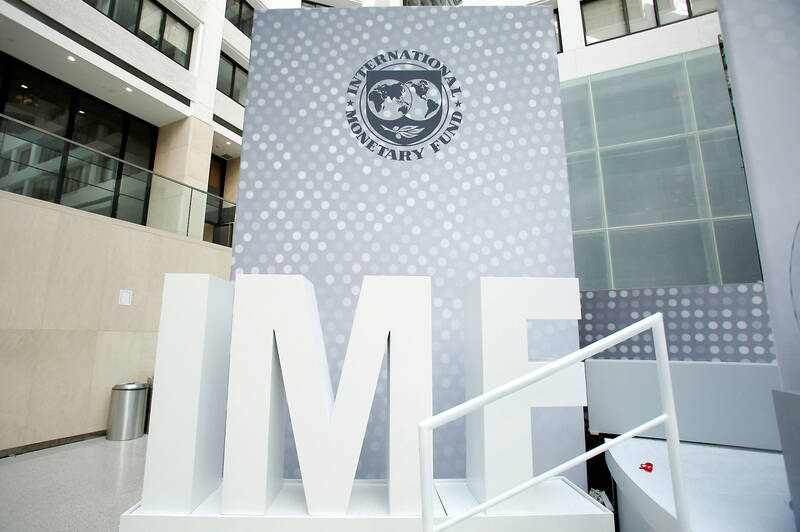Last week the Directorate-General of Budget, Accounting and Statistics (DGBAS) released a set of very strange numbers on Taiwan’s wealth distribution. Duly quoted in the Taipei Times, the report said that “The Gini coefficient for Taiwanese households… was 0.606 at the end of 2021, lower than Australia’s 0.611, the UK’s 0.620, Japan’s 0.678, France’s 0.676 and Germany’s 0.727, the agency said in a report.”
The Gini coefficient is a measure of relative inequality, usually of wealth or income, though it can be used to evaluate other forms of inequality. However, for most nations it is a number from .25 to .50 (or 20-50 depending how it is presented), not a number over .60, and certainly not for European nations with histories of social democracy. As a longtime observer of Taiwan noted in a private email to me, it appears that the DGBAS actually inverted the numbers.
ABNORMAL NUMBERS

Photo: Chou Min-hung, Taipei Times.
The Gini coefficient for Taiwan and most other advanced economies is usually a number in the low to mid-30s. For example, a paper from a group of scholars at National Taiwan University (NTU) and other top research institutions on trends in Taiwan’s income inequality published last year states: “Today, the official Gini coefficient is around 0.33.” A glance at the World Bank website shows this is broadly true for the whole world. For Germany, it is not .727 as the DGBAS states, but around .32 according to the World Bank, .31 for France (2021), .32 for Japan (2013), .32 for the United Kingdom (2021) and .38 for the US (2021).
Whatever its problems, the DGBAS report glosses over the extent of wealth disparities in Taiwan in other ways. It uses the Gini coefficient for household wealth. As the paper quoted above observed, the household tax data represents only about half the income in Taiwan. The other half consists of government income, untaxed income, and corporate income. There is also a significant income component, capital gains, that is not counted in the Gini. Further, as the paper notes, top incomes are under-reported, while the Gini itself is a only a broad measure that is less sensitive to changes in higher income groups — precisely the groups making the greatest gains since 2000.
That paper goes on to develop another measure of income inequality, and not surprisingly, it finds that income inequality is much higher. The Gini measures households, but their measure assigns the distribution of income to each individual in the nation. Readers will probably not be very shocked to find the DGBAS presentation deprecates Taiwan’s actual wealth and income inequality, which has been a key bragging point for decades by successive governments.

Photo: REUTERS
When capital income is taken into account, inequality in Taiwan began worsening visibly nearly three decades ago, because of the distribution of capital income. “Overall, we find that the rising income inequality after the middle 1990s in Taiwan is a capital income phenomenon.” By their methodology, inequality in Taiwan reached US levels in the 2010s and Taiwan now belongs in the tier of inequality with the US, just below the highest level, which includes nations such as India and Brazil.
The high income inequality is evidenced by other numbers. Statistics show that labor’s share of the take of Taiwan’s GDP has been in decline for many years, and is now less than half. Corporations receive a disproportionate return thanks to the low salaries here relative to labor productivity. “Overall, the net primary income of corporations to national income share increases two-fold from the 1990s to the 2010s,” observes the 2023 paper above. A ThinkChina piece last year said that “over 68 percent of wage earners have a salary lower than the average,” partly because a few high wage earners skew the average.
Another signifier of high income inequality is the increase in tall buildings in Taiwan. Several thinkers, Alex Marshall and Jason Barr among them, have argued that building height and income inequality are correlated. That does not hold true for every nation (Brazil, for example), but for more advanced economies, it seems to be broadly true. Two nations with high levels of income inequality and great wealth, the US and the People’s Republic of China (PRC), lead the world in skyscrapers.
The rise in income inequality is paradoxical: globally, income inequality is declining across countries, but within countries, it is rising, according to the International Money Fund (IMF). “Excessive” inequality reduces social cohesion and increases political polarization, the IMF says. As any economist knows, it reduces overall consumption and slows economic growth. Jonathon Ostrey, an IMF official, warned in an interview that “Too much inequality can undercut the ability to sustain growth.”
The IMF asks the key question: when is inequality excessive? The IMF says that is a question for each country to answer, based on its unique social and economic context. There are actually studies that attempt to address that question. In a 2005 study Robert Macculloch found that a 1 standard deviation increase in the Gini coefficient of income explains 38 percent of the standard deviation in revolutionary support. MacCulloch argued that since high income people rarely revolt, increasing incomes should reduce support for revolution.
CROSS-PARTY FAILURE
In Taiwan, the failure of either of the major national parties, the Chinese Nationalist Party (KMT) and the Democratic Progressive Party (DPP) to address the inequality (and numerous other social welfare issues) has led the public to search for alternatives. The major winner of this has been Ko Wen-je (柯文哲) and his Taiwan People’s Party (TPP). The TPP is not a left-wing alternative party, but has taken the position of another right-wing, pro-China party, which a large number of disaffected DPP supporters voted for, especially males.
This suggests, as some of us have been noting, that the DPP failure to make meaningful change, has left the door open for right-wing candidates who can position themselves as outsiders. Indeed, a prominent academic suggested on Twitter/X that another split presidential election vote and further failures on the economic welfare front could well let Fu Kun-chi (傅崐萁) squeak by into the presidency.
I do not think Fu will be acceptable to the public at large, but there are several slick opportunists with local fan bases who could slip into that role. But the larger problem with the eight-year DPP failure, as the KMT knows, is that when the public gives up toying with alternative candidates over the next couple of election cycles — it may well conclude that annexation to the PRC is a potential cure for what ails their economic welfare.
Last week KMT lawmakers, led by Legislator Niu Hsu-ting (牛煦庭), sought to amend the Labor Standards Act (勞動基準法) to allow employers to pay new workers 80 percent the standard wage during their probationary period. The law was a direct copy of a PRC law, the DPP’s Wang Ting-yu (王定宇) pointed out.
Is it only to help their big business supporters that the KMT pushes bills like this?
Notes from Central Taiwan is a column written by long-term resident Michael Turton, who provides incisive commentary informed by three decades of living in and writing about his adoptive country. The views expressed here are his own.

The 1990s were a turbulent time for the Chinese Nationalist Party’s (KMT) patronage factions. For a look at how they formed, check out the March 2 “Deep Dives.” In the boom years of the 1980s and 1990s the factions amassed fortunes from corruption, access to the levers of local government and prime access to property. They also moved into industries like construction and the gravel business, devastating river ecosystems while the governments they controlled looked the other way. By this period, the factions had largely carved out geographical feifdoms in the local jurisdictions the national KMT restrained them to. For example,

April 14 to April 20 In March 1947, Sising Katadrepan urged the government to drop the “high mountain people” (高山族) designation for Indigenous Taiwanese and refer to them as “Taiwan people” (台灣族). He considered the term derogatory, arguing that it made them sound like animals. The Taiwan Provincial Government agreed to stop using the term, stating that Indigenous Taiwanese suffered all sorts of discrimination and oppression under the Japanese and were forced to live in the mountains as outsiders to society. Now, under the new regime, they would be seen as equals, thus they should be henceforth

With over 100 works on display, this is Louise Bourgeois’ first solo show in Taiwan. Visitors are invited to traverse her world of love and hate, vengeance and acceptance, trauma and reconciliation. Dominating the entrance, the nine-foot-tall Crouching Spider (2003) greets visitors. The creature looms behind the glass facade, symbolic protector and gatekeeper to the intimate journey ahead. Bourgeois, best known for her giant spider sculptures, is one of the most influential artist of the twentieth century. Blending vulnerability and defiance through themes of sexuality, trauma and identity, her work reshaped the landscape of contemporary art with fearless honesty. “People are influenced by

The remains of this Japanese-era trail designed to protect the camphor industry make for a scenic day-hike, a fascinating overnight hike or a challenging multi-day adventure Maolin District (茂林) in Kaohsiung is well known for beautiful roadside scenery, waterfalls, the annual butterfly migration and indigenous culture. A lesser known but worthwhile destination here lies along the very top of the valley: the Liugui Security Path (六龜警備道). This relic of the Japanese era once isolated the Maolin valley from the outside world but now serves to draw tourists in. The path originally ran for about 50km, but not all of this trail is still easily walkable. The nicest section for a simple day hike is the heavily trafficked southern section above Maolin and Wanshan (萬山) villages. Remains of